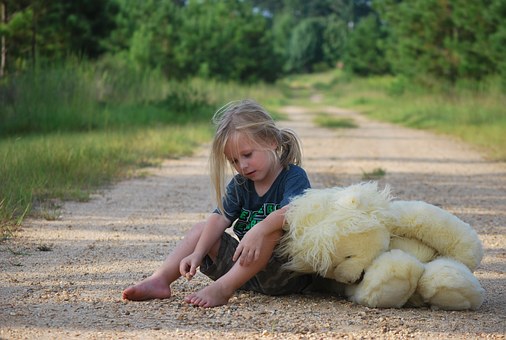Baby Skin Problems

Yellow Baby: Newborn Jaundice (Physiologic Jaundice or Physiologic Hyperbilirubimmia)
.Even if the pregnancy, labor, and delivery went magnificently well, and the fruit of your labor is as perfect as can be, the odds are still 50-50 that your newborn's peachy skin will be a banana-yellow for several days. The term applied to this condition is jaundice, derived from the French jaune, meaning yellow. Jaundice is so common in normal, healthy newborns that its occurrence during the first week of life is considered natural or "physiologic." The color comes from the buildup of a yellow-red pigment called bilirubin (pronounced billy-roo-biri) in the baby's blood. Bilirubin is a normal ingredient of all human blood, but it's usually present at levels too low to produce a yellow color. Virtually every newborn will develop levels of the pigment that, when measured, show slight elevations, but only half of all babies will develop levels high enough to cause the skin to appear yellow. But if your yellow baby is perfectly normal, why is the doctor watching her bilirubin level so closely, and why is this common pigment talked about so much these days? The answer is, in part, that bilirubin has a long and circuitous history.
Thirty years ago, when medical science was first exploring the consequences of Rh factor disease, we learned that babies with very high bilirubin levels were at risk of suffering a type of" brain injury called kernicterus, and that, conversely, the risk of kernicterus in full-termers was extremely low if we could keep the bilirubin counts below 20 milligrams/100 milliliters. That was the beginning of "bilirubin watching" and the "20 phobia." Since those early lessons, however, the sanctity of "20" has fallen on hard times. We have seen premies get kernicterus at levels below 20 milligrams, and full-termers tolerate levels above 20 without suffering this type of brain injury. (Nevertheless, we continue to watch bilirubin levels for reasons that I'll explain further on in this section.) Furthermore, physicians began talking to parents about bilirubin levels when it became a financial necessity for mothers and babies to go home from the hospital on day two or three, instead of day five. Back in the days when hospital costs were low, doctors were able to satisfy themselves on the subject of the baby's bilirubin count by the time mother and baby went home. The baby's bilirubin count would, in its normal manner, creep up slowly, and the baby would appear yellow on the third day. The doctor would check the level on the following days and see that it wasn't going to be a problem; then, on the fifth day, Mother and her slightly yellow baby would go home. Parents didn't need to know where the yellow went, or where it had been.
Today, because hospital costs are so high, mothers and babies are going home on day two or threethe very same day that bilirubin levels are going up. Sometimes mothers may go home but, at the doc-tot's request, leave their jaundiced babies in the nursery where the bilirubin level can be watched more closely. Some mothers take the babies home and return to the laboratory for additional bilirubin tests. For most babies, the level falls and the doctor stops testing. Sometimes, however, the level rises and the doctor will decide to readmit the baby to the hospital. To understand why we're still so concerned about bilirubin, it helps to know how it's produced in the body, is processed in the liver, and finds its ultimate fate in the intestines. The production end involves the red blood cell (RBC), which delivers oxygen from the lung to the tissues. Within the RBC, the pigment hemoglobin actually carries the oxygen. The process is much like a truck delivering heating oil to your home. The RBC is the truck; the hemoglobin is the truck's storage tank; the oxygen is the heating oil. After 100 days or so, the RBC grows old and is taken off its route, and new red blood cells arrive to take its place. In the process of dismantling the old RBC, the pigment hemoglobin is converted to the pigment bilirubin, which then enters the circulation. RBC destruction accounts for 75 to 80 percent of the bilirubin in the bloodstream. (The rest, called shunt bilirubin, comes from a number of other sources.). The next step is to transfer the bilirubin to the processing center, the liver cell. Bilirubin travels to the liver cell bound to a carrier protein, albumin. Once it reaches its destination, a liver protein called Y plucks it out of the bloodstream, and another protein called Z slips it into the liver cell. Now the processing begins. After the Z protein has positioned the bilirubin in the right spot in the liver cell, an enzyme comes along and combines glucuronic acid with the bilirubin, producing a new compound called conjugated bilirubin.

Only conjugated bilirubin can be excreted by the liver, so this conjugating step is essential. Without it, the bilirubin would be condemned to remain in the liver cell forever. Once the conjugated bilirubin has left the liver cell, it mixes with the bile and empties into the intestines. There it isn't reabsorbed, but is acted upon by the intestinal bacteria, and most of it is ultimately excretes. (This is what gives the stool its color.) This would seem to take care of the bilirubin once and for all, but not quite. Because some of it is not excreted This .leftover but still conjugated bilirubin gets stripped of its glucuronic acid by the bacteria, converted back into unconjugated bilirubin, and absorbed out of the intestine and into the bloodstream to make its way back to the liver for another go. At this point, it's in the same state as when it left the decrepit RBC. It, along with the new bilirubin, must make its way back to the liver to be conjugated, completing the last leg of what's called enterohepatic circulation (enters means intestine; hepatic means liver). Before the baby was born, the only pathway of any importance was the one that connected it to the placenta. The placenta happily accepted all of the baby's unconjugated bilirubin and passed it on to the mother.
The fetal liver got a free ride because the mother's liver was doing all the conjugating for it. Once detached from the placenta, though, baby is on his own, and his little liver has to work hard every step of the way. In the first place, the baby's liver has had no practice conjugating bilirubin. In the second place, the newborn, with his large blood volume and high hemoglobin concentration, has many more RBCs per pound than the adult. Plus its RBCs don't last as long as the adult's. As a result, the newborn's daily production of bilirubin from hemoglobin is twice the adult's rate. And if this isn't tough enough, the baby has more shunt bilirubin and more bilirubin traveling along his enterohepatic circulation. The baby's body tasks are just beginning. The bilirubin must get to the liver cell for processing. This requires a good circulation. Baby had one before he was born. The fetus's liver took its blood from the- huge umbilical vein, one of the main vessels of the umbilical cord. But once the cord is tied, the baby's liver has to adjust to a brand-new, much smaller supply of blood. The net effect is a reduction in the amount of blood flowing into the liver. This doesn't help. Furthermore, for the first five days of life, the liver cell is low on Y protein so it's less able to snare bilirubin out of the circulation. And once the bilirubin is in the immature liver cell, it runs into yet another, and most important, stumbling block. The liver cell doesn't have enough enzyme to go around.
Without the glucuronyl transferase to conjugate the bilirubin, the whole process gets jammed up within the liver cell. In fact, even the conjugated bilirubin has a hard time making its way out of the immature, inexperienced cell. The newborn's liver cell is unaccustomed to conjugated bilirubin, and its ability to excrete it out of the cell isn't yet up to par. So it happens that unconjugated bilirubin accumulates in the baby's liver cell, and eventually its concentration in the bloodstream rises, turning him yellowish. When an adult's level of bilirubin exceeds 2 milligrams /100 milliliters, it's considered excessive. But for the newborn, as you've seen, it's pretty much par for the course. It's considered natural or "physiologic" for the bilirubin level to be above 2 milligrams/100 milliliters from birth until the tenth day of life.
by: Rashid Javed Baby Boomers Starting Over Functional and Comfortable Baby Care Products How Babysitters In Los Angeles Can Transition Into Full-time Nanny Work What Is Nasty About A Babys Daiper The Baby Jogger City Classic Double Stroller New Born Baby Hats-learn More About Them Caring For Your Baby Natural Parenting With Organic Baby Clothes Baby Baptism Invitations as Special as Your Occasion Find Exciting Range Of Baby Products Vital Information Every Parent Should Know About Natural Treatments For Baby Eczema Is It Possible To Select Your Baby's Gender Feeding In Style With Glass Baby Bottles